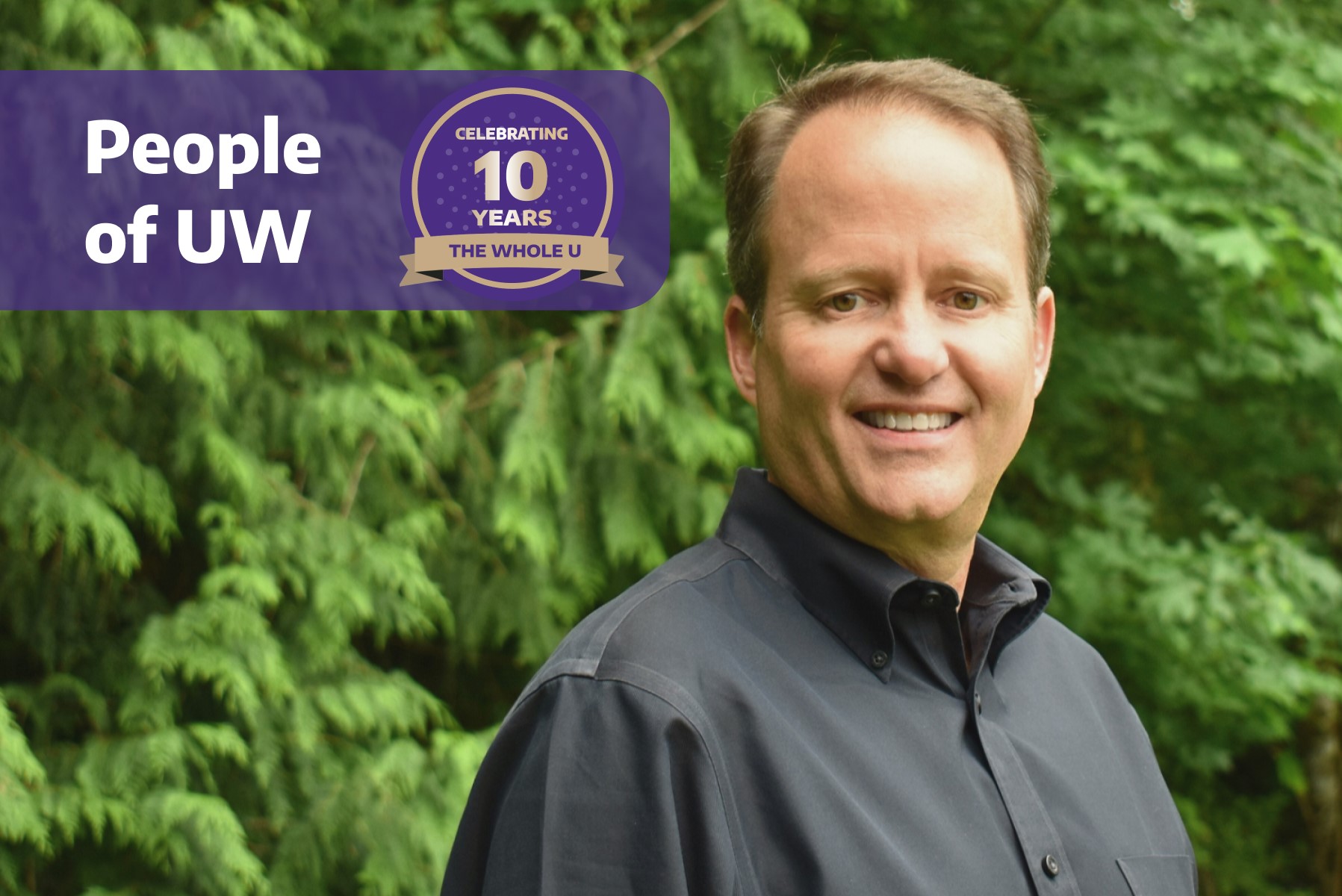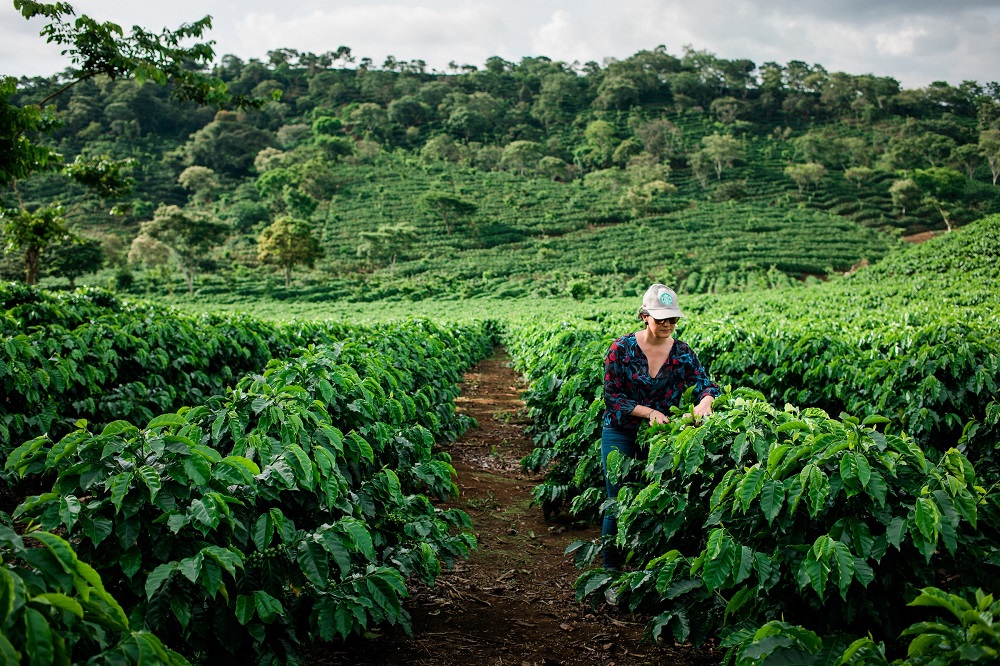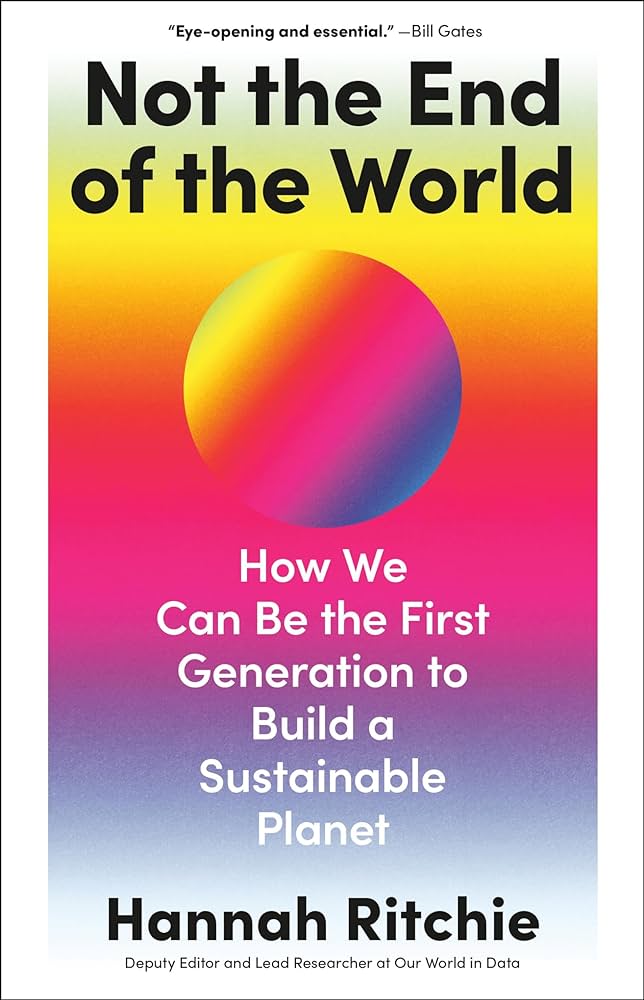
Ben Packard leads EarthLab’s efforts to connect UW resources to community action addressing the threats—and inequities—of climate change
Identifying the root cause of the climate crisis is simple enough. Finding solutions? Not so simple. It requires enormous creativity, commitment and collaboration, often among traditional antagonists in the public, private and nonprofit sectors.
To foster these ad hoc collaborations, there is UW EarthLab, a transdisciplinary institute within the College of the Environment that is connecting the diverse research expertise and student energy of the University of Washington to community-driven initiatives mitigating the effects of and building resilience to climate change—with a focus on climate justice.
It’s an ambitious goal. But a goal made more attainable by the presence of Ben Packard, the Harriet Bullitt Endowed Executive Director of EarthLab, who brings a unique set of skills, experiences and perspectives from a trailblazing career of impact on environmental sustainability in every sector of the economy.
 “As EarthLab’s inaugural leader,” says Sally Jewell, the former U.S. Secretary of the Interior and current chair of the institute’s Advisory Council, “Ben has effectively created a bridge between the community and the incredible capacity of the University of Washington to address real-world challenges that can provide a road map to long-term, positive change.”
“As EarthLab’s inaugural leader,” says Sally Jewell, the former U.S. Secretary of the Interior and current chair of the institute’s Advisory Council, “Ben has effectively created a bridge between the community and the incredible capacity of the University of Washington to address real-world challenges that can provide a road map to long-term, positive change.”
Cultivating a career
Packard’s love of the natural world was cultivated during childhood adventures in the pristine mountains and lakes of the New York Adirondacks. “I can’t tell you a time when the environment wasn’t important to me,” he says.
While studying history and Spanish at Kenyon College, in rural Ohio, he identified sustainability as a career aspiration. And he moved to Seattle in the early 1990s “because I thought it was a place where I might figure out how to work in this field.”
It was. And he did. First by working in King County government to establish a public-private commission exploring how to create local markets for recycled materials, then helping to launch a plastic recycling company. “These experiences lit a bulb about the opportunity for the private sector to play a significant role in addressing this issue that meant a lot to me,” Packard says.
Wanting to learn the language of business, he enrolled in the MBA Program at the UW Foster School of Business. At the time, Foster offered one of the nation’s first certificate programs in environmental management, a cross-campus collaboration of business, policy, law, forestry, atmospheric sciences and more. “The UW was very much ahead of its time in this,” Packard notes.
Through the program, he met Sue Mecklenburg, a fellow UW Foster MBA alum, who was the first person to have the word “environment” in a title at Starbucks. He became the second.
Normalizing corporate sustainability
Beginning in 1998, Packard rose from manager of environmental affairs to vice president of global responsibility at Starbucks, his career growing apace a company that placed social and environmental responsibility at the core of its brand.
That brand grew into one of the most influential in the world, despite the company’s comparatively small size. In establishing a groundbreaking corporate sustainability strategy, Packard “leveraged a brand influence that outsized our buying power.”
Despite purchasing only a small percentage of the world’s coffee beans, Starbucks instituted rigorous CAFE (Coffee and Farmer Equity) Practices, which have been adopted across the industry. Despite a relatively small store footprint, it pushed green construction and introduced the first LEED-certified retail stores. After reducing the waste of “double-cupping” with the recyclable sleeve, Starbucks was first to work post-consumer recycled fiber into packaging that touched food.
Packard credits innovations like these to the vision and latitude of former Starbucks CEOs Howard Schultz and Orin Smith (a fellow Foster grad). “Part of the company mission was to contribute positively to communities and the environment,” he says. “We were given the permission to listen to our harshest critics, to dream big about ways to change systems and to make things happen.”
 By applying business metrics to sustainability strategy—and demonstrating it supported the bottom line—Packard’s work at Starbucks became a kind of proof of concept for the corporate world. “We de-risked sustainability and gave other businesses permission to follow,” he says. “That was meaningful.”
By applying business metrics to sustainability strategy—and demonstrating it supported the bottom line—Packard’s work at Starbucks became a kind of proof of concept for the corporate world. “We de-risked sustainability and gave other businesses permission to follow,” he says. “That was meaningful.”
Going bigger
After 15 busy years with Starbucks, Packard took a “coffee break” sabbatical to recharge and spend some quality time with his school-age children. “The best part of that time away was the little things such as being able to walk my kids to school,” he remembers.
He also took the opportunity to consider the next chapter of his career. Eventually, he decided to take on a new challenge leading global corporate engagement at The Nature Conservancy.
“I really wanted to continue working on sustainability issues,” Packard says. “But I was curious how it was playing out at different companies, and whether I could help other companies based on my experience at Starbucks.”
At The Nature Conservancy, the scale of companies he worked with grew dramatically (think General Foods, PepsiCo, Walmart, Cargill). And so did the environmental impact of even incremental moves toward more sustainable supply chains and strategies. “Big companies incorporating these considerations into their practices could change the trajectory of some of the critical issues around water and climate and biodiversity,” he says.
The experience confirmed his notion that environmental issues transcend sectors, so solutions must connect across sectors. “Durable environmental solutions only occur when the policy landscape, community engagement and consumer interest and corporate behavior are aligned,” he says.
But there was one other key player he had not fully explored.
Connector, investor, incubator, accelerator
Universities were already sprawling incubators of ideas and innovations. Packard had found them to be important partners in his efforts to advance sustainability initiatives at Starbucks and The Nature Conservancy. And the University of Washington, among the most sprawling, was doing a diverse range of work around climate and the environment.
What if there were a connector of this disparate research, teaching and outreach?
That became the concept behind EarthLab, introduced as an outward-facing component of the College of the Environment a decade after its 2008 creation.
A UW Regent at the time, Jewell and her colleagues envisioned “bringing multiple disciplines together to address some of our Earth’s most pressing environmental challenges. EarthLab was formed to further this vision, facilitating partnerships between scholars, researchers and local leaders to help communities adapt to climate change and address environmental justice inequities.”
When Packard was selected to shape this academic startup with a unique value proposition, the opportunity proved irresistible. “I enjoy those open spaces that others might find uncomfortable,” he says. “Plus, the UW is in a unique position to do something big for the region and for the world.”
After formally launching in fall of 2018, Packard and the EarthLab team began rolling out initiatives. They created mechanisms to connect academic disciplines at the UW: natural and social sciences, environment and engineering, oceanography and forestry, public health and medicine, business, law, social work and more. They created meaningful programs to develop students into the next generation of climate leaders. And they invested heavily in collaborations through the Innovation Grant Program.
Research in action
Over the past five years, EarthLab has provided roughly $2 million in seed funding to 29 innovative community-driven projects to develop new and actionable knowledge at the intersection of climate change and social justice.
A collaboration of El Centro de la Raza and UW public health, environmental engineering and atmospheric sciences experts is studying the effects of different kinds of vegetation on air quality for people living near highways and under the SeaTac flight path.
A team of UW College of the Environment, Department of Aeronautics & Astronautics and the Sauk-Suiattle Tribe is developing tribal-led salmon population monitoring using drone and AI-based computer vision.
 A partnership of UW law and public health researchers and the advocacy group Front and Centered have produced a policy proposal to “Reverse Redlining” by protecting health of communities disproportionately burdened by the impact of climate change. This proposal went to the state legislature this year.
A partnership of UW law and public health researchers and the advocacy group Front and Centered have produced a policy proposal to “Reverse Redlining” by protecting health of communities disproportionately burdened by the impact of climate change. This proposal went to the state legislature this year.
And the sweeping “Clean SHiFT” team—spanning the UW Department of Environmental and Occupational Health and Safety, UW Bothell School of Nursing and Health Studies, Heritage University, PopUpJustice and the Washington State Department of Ecology—developed a guide to safe cleaning practices for the food truck industry that won a 2022 Safer Choice Partner of the Year Award from the U.S. Environmental Protection Agency.
Projects such as these are intended to be scalable, often serving as the first spark that ignites the foundational work necessary to build relationships, prove a concept and seek additional funding. This is something that EarthLab is sharing openly and widely. More than producing academic papers, Packard explains, the point is to improve and protect communities against the threats of climate change. “That’s the main outcome we’re seeking.”
Finding hope
Packard takes heart in being part of the solution to the climate crisis as a job. But he acknowledges the terrifying scale of the challenge. The six years since EarthLab’s founding have been wracked by a global pandemic, political division, war, persistent racial injustice and a litany of historic heatwaves, superstorms, megafires and massive floods that hit like a shot across the bow from a feverish climate.
“It can be daunting and feel overwhelming at times,” he says. “But we all have a role to play.”
Even in a world that has politicized climate change, Packard observes that “everybody cares about the future of their children, their grandchildren, their communities.”
When he co-teaches the honors Introduction to Sustainable Business in the Program on the Environment, his students often ask what gives him hope. “The hope I have is that things have changed dramatically since I left Foster in 1998,” he tells them. “Have they changed enough—or fast enough? No. But the fact that the SEC is now deciding how much environmental, social and governance information needs to be disclosed in publicly traded companies, that front-line communities have a seat at the table in the development of solutions, that our state has placed a price on carbon, that the current administration just invested billions and billions of dollars on climate mitigation—things have changed enormously. That gives me hope.”
 Recommended reading
Recommended reading
Ben Packard is finding enormous inspiration in “Not the End of the World: How to be the First Generation to Build a Sustainable Planet” by Hannah Ritchie, which “reinforces that we all have a role to play in shaping the future and lays out the really important things we need to pay attention to get to a low-carbon future.”

